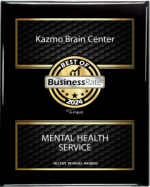Dealing with stress in the workplace has become a common challenge for many professionals, affecting their productivity and the way they deal with others. High expectations, tight deadlines, and the constant pressure to perform can significantly impact mental and physical well-being. Implementing effective stress management strategies is essential to maintain productivity and ensure a healthy work-life balance.
Understanding Workplace Stress
Workplace stress is the physical and emotional response that occurs when the demands of the job do not match the capabilities, resources, or needs of the employee.
It can lead to a variety of symptoms, including fatigue, anxiety, irritability, and difficulty concentrating.
Long-term exposure to stress can result in more significant health issues such as depression, cardiovascular diseases, and burnout.
Effective Stress Management Techniques
1. Identify and Prioritize Tasks
– Start by identifying the specific sources of stress in your workplace. Once you recognize these sources, prioritize your tasks by importance and deadlines. Breaking down large projects into smaller, manageable tasks can make them less overwhelming.
2. Time Management
– Effective time management is crucial. Use calendars, to-do lists, and productivity apps to organize your workday. Allocate specific time slots for different tasks and avoid multitasking, which can increase stress levels.
3. Take Regular Breaks
– Taking short, regular breaks throughout the day can help reduce stress. Step away from your desk, take a walk, or engage in a quick mindfulness exercise. These breaks can help clear your mind and improve focus.
4. Practice Mindfulness and Relaxation Techniques
– Mindfulness and relaxation techniques, such as deep breathing exercises, meditation, and yoga, can significantly reduce stress. These practices help calm the mind, reduce anxiety, and improve overall mental health.
5. Maintain a Healthy Work-Life Balance
– Balancing work with personal life is essential for stress management and can be quite challenging. Set boundaries to ensure you have time to relax and recharge. Avoid checking work emails and messages during your time, and make your mental stability a priority.
6. Create a Supportive Work Environment
– A supportive work environment can greatly reduce stress. Build positive relationships with colleagues, seek support when needed, and communicate openly with supervisors about any concerns.
7. Stay Physically Active
– Regular physical activity is one of the most effective stress management strategies. Exercise releases endorphins, which are natural stress relievers. Incorporate activities such as walking, jogging, or even a short workout into your daily routine.
8. Seek Professional Help if Needed
– If workplace stress becomes overwhelming, don’t hesitate to seek professional help. A mental health professional can provide strategies and support to manage stress effectively.
The Role of Employers in Stress Management
Employers play a crucial role in promoting stress management in the workplace. Providing resources such as stress management workshops, and employee assistance programs, and creating a culture that prioritizes mental health can make a significant difference. Encouraging open communication and providing a supportive environment can help employees feel valued and less stressed.
Kazmo Brain Center is Ready to Help You Manage Stress
Dealing with stress in the workplace is an ongoing challenge, but with the right stress management techniques, it is possible to maintain a healthy work environment. At Kazmo Brain Center in Frisco, Texas, we can help you identify stressors, manage time effectively, maintain a work-life balance, and create a supportive work environment.
Just reach out to us and our experts will be happy to help you overcome stress: https://kazmobrain.com/contact-us/
Read more: What is Cyclothymia? Symptoms, causes, and treatment







